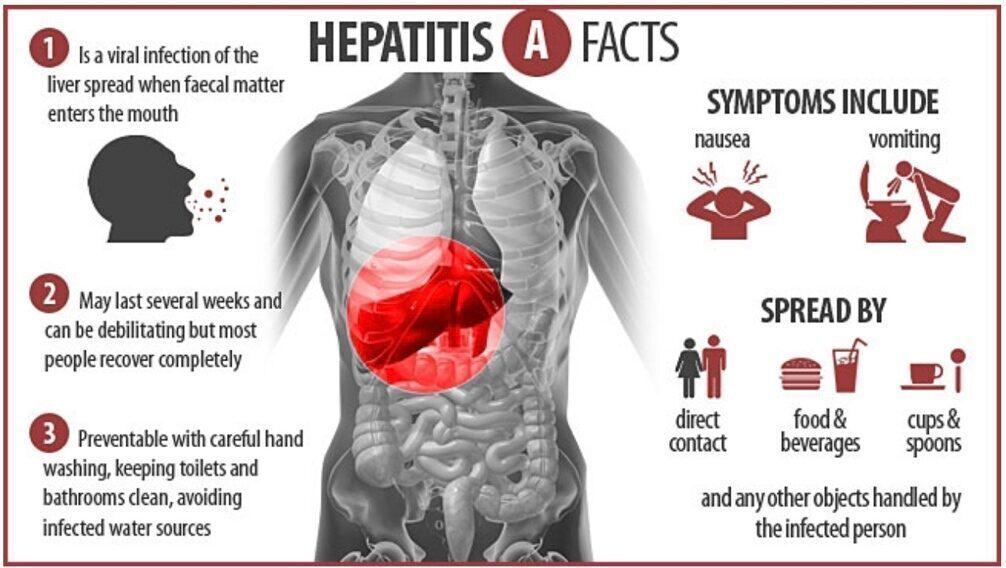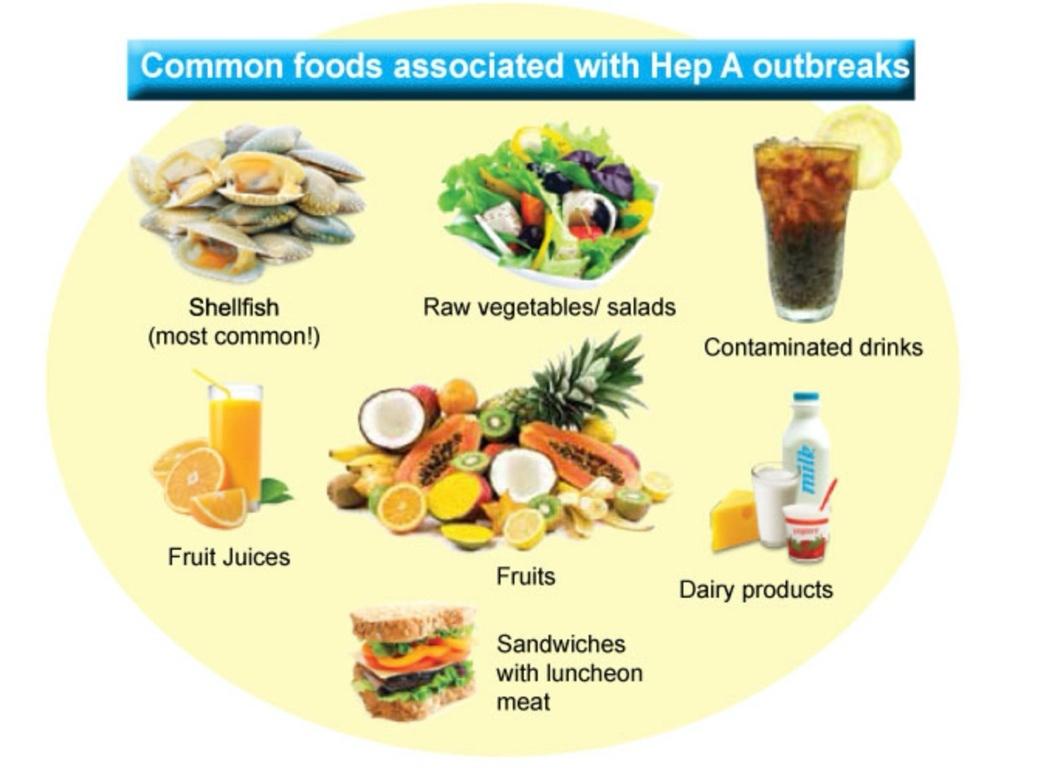How does Hepatitis A spread?
Hepatitis A is a communicable (or contagious) disease that is acquired primarily by the fecal oral route either from person to person or through contaminated food or water.
Food-related outbreaks are most commonly associated with contamination of food during preparation by an HAV-infected food handler. The food handler may not recognize they are contagious or ill because the peak time of infectivity—that is, when the most virus is present in the stool of an infected individual—occurs during the two weeks before symptoms begin.


Figure 1. Hepatitis A outbreaks associated with shellfish, worldwide, from 1956 to 2016.

Fresh produce contaminated during cultivation, harvesting, processing, and distribution has also been a source of hepatitis A infections. In 1997, frozen strawberries were the source of a hepatitis A outbreak in five states and, in 2016, were the source of a hepatitis A outbreak in nine states. In 2003, fresh green onions were identified as the source of a hepatitis A outbreak traced to consumption of food at a Pennsylvania restaurant. Other produce, such as blueberries, lettuce, blackberries, and pomegranate seeds, has been associated with hepatitis A outbreaks in the U.S. as well as in other developed countries.
Figure 2. Hepatitis A outbreaks associated with fresh, frozen, and minimally processed produce, worldwide, from 1983 to 2016.

HAV is relatively stable and can survive for several hours on fingertips and hands, and up to two months on dry surfaces. The virus can be inactivated by heating to 185°F (85°C) or higher for one minute, or disinfecting surfaces with a 1:100 dilution of sodium hypochlorite (household bleach) in tap water. It must be noted, however, that HAV can still be spread from cooked food if it is contaminated after cooking.
Although ingestion of contaminated food is a common means of spread for hepatitis A, the virus may also be spread by household contact among families or roommates, sexual contact, or less commonly, through blood-to-blood contact between persons sharing illicit drugs. Young children are often asymptomatic or have unrecognized infections, but they can infect their parents and other adults, as well as older children, who are more likely to exhibit symptoms.